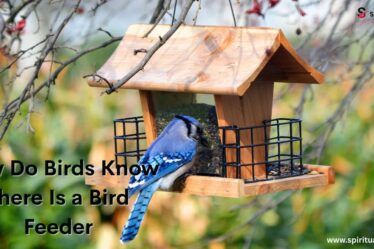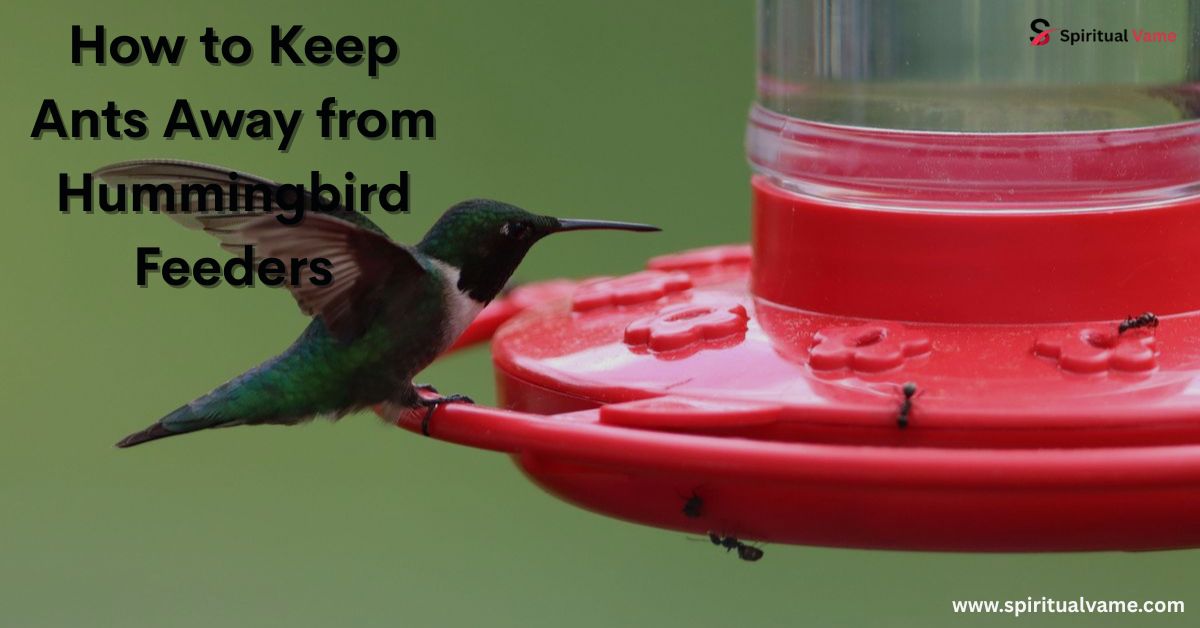
Hummingbirds bring so much joy to any backyard, but nothing ruins their peaceful visits faster than a line of ants crawling into their nectar. Ants are naturally drawn to sugary solutions like the sweet nectar you lovingly put out for these tiny birds. Unfortunately, once one ant finds your feeder, it leaves behind a scent trail, inviting all its friends. If you’re wondering how to keep ants away from hummingbird feeders, you’ve come to the right place. In this guide, you’ll learn exactly how to protect your feeding stations and keep your backyard buzzing with life, not bugs.
The good news is that you don’t have to use dangerous chemicals to solve the problem. By understanding why ants are attracted to feeders and using simple, natural tricks, you can prevent infestations. This article will walk you through effective solutions that are safe for both the hummingbirds and your garden.
Keep Ants Out of Hummingbird Feeders
When it comes to protecting your hummingbird feeders, the key is staying one step ahead of the ants. They can climb surprisingly fast and cross impressive barriers when motivated by the smell of nectar. Setting up a few smart defenses is the best way to keep them away without harming the birds or the environment.
You’ll find that a mixture of methods often works better than just one. Install an Ant Moat, maintain cleanliness, and use natural repellents in combination for the most success. Each method strengthens the barrier between the ants and the sweet reward they seek. Think of it like building layers of protection around your hummingbird paradise.
How to Keep Ants Out of Hummingbird Feeders
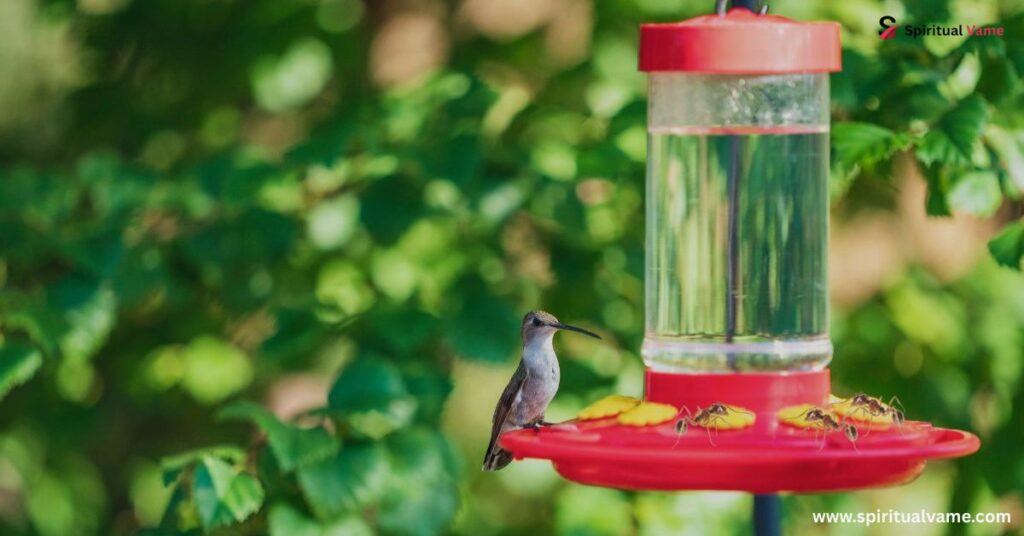
First, let’s get serious about building physical barriers. One of the simplest and most effective tools you can use is an ant moat. This device is a tiny cup that you hang above your feeder, and it’s filled with water. Ants can’t cross the water, making it an instant barrier between the feeder and their army. You can buy a moat at most garden stores, but building a DIY version using a soda bottle cap is easy too. Just make sure you refill it regularly so it stays effective. It’s a natural solution that doesn’t hurt the birds or the environment.
Another major factor to think about is keeping everything spotless. A feeder sticky with nectar drips is like ringing a dinner bell for ants. Clean your feeder often by wiping it down with a damp cloth. Make it part of your daily or weekly routine to avoid residue, spills, and sugar buildup. Maintain cleanliness and good hygiene to prevent infestations before they even start. The cleaner your feeding station, the less appealing it will be to insects.
1. Use an Ant Moat on Your Hummingbird Feeder
Adding an ant moat is like putting a tiny moat around a castle. It sounds simple, but it works wonders. The moat acts as a barrier, and ants hate water. Every time they try to climb toward the feeder, they get stopped cold. You can either buy one online or make a homemade version with a few basic tools. Think of it as essential maintenance for your bird feeding station — simple, but so important.
2. Keep Your Bird Feeder Clean
Nothing invites trouble faster than a messy feeder. Even a few drops of nectar can attract ants from far away. Use a damp cloth to wipe down sticky surfaces daily. Remember, the cleaner the feeder, the fewer the ants. Plus, hummingbirds appreciate a spotless dining experience too! Good hygiene helps you stay ahead of any insect problems and keeps your garden healthy.
3. Consider Regularly Changing the Placement of Your Feeder
Move your feeder to a new location every few days to disrupt the ants’ trail. When you change the position, the ants have to start all over again. It confuses them and prevents easy access to the food source. Try spacing multiple feeders at least seven feet apart for the best strategy. This way, you give the hummingbirds options and make life harder for the ants.
4. Sprinkle Cinnamon or Use Essential Oils as an Ant Deterrent
Ants navigate the world through smells. Sprinkle cinnamon around the base of the feeder or use essential oils like peppermint, eucalyptus, or tea tree to create a strong aroma. These natural repellents will confuse ants’ ability to track the feeder. Just apply carefully, avoiding direct contact with the feeder ports where the hummingbirds drink. Safe substances like mint and citrus peels can also help deter pests without harming your tiny feathered friends.
5. Hang Your Hummingbird Feeder Using Fishing Line
Sometimes, the best tricks are the simplest. Hang your feeders using fishing line to create a slippery, thin suspension that ants struggle to climb. This method doesn’t just slow them down — it often stops them completely. The combination of a slick surface and movement from the feeder swinging makes it almost impossible for ants to succeed. Plus, it’s an easy and inexpensive fix that works beautifully in most gardens.
6. Avoid Pesticides Near Wildlife Feeders
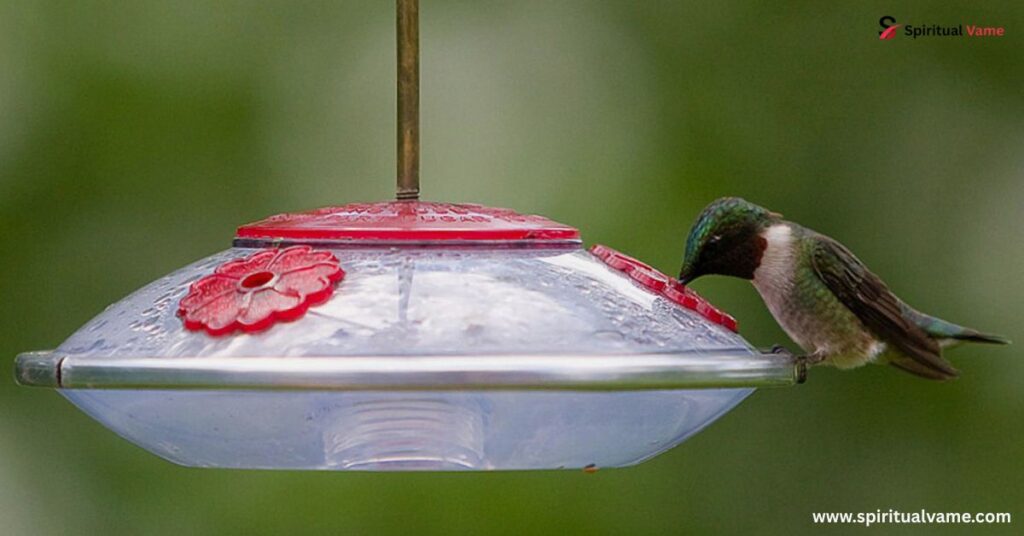
It’s tempting to reach for pesticides, but don’t. Avoid petroleum jelly, vegetable oil, or any chemical deterrents around wildlife feeders. They can harm hummingbirds’ feathers and mess with their thermoregulation. Instead, stick with natural solutions that are bird-safe. Always be cautious when choosing a method to solve insect problems near your garden visitors.
7 Natural Ways to Keep Ants Out
Nature gives us plenty of ways to protect our feeders without hurting the environment. Placing mint leaves or bay leaves around the feeder gives off a smell that ants hate. Hanging the feeder over water, like a birdbath, acts as a natural barrier too. You can even make surfaces sticky or slippery, although you must use caution to avoid harming the birds. Each natural repellent offers another layer of protection against unwanted guests.
Sometimes combining methods works best. You might try hanging the feeder with fishing line while sprinkling cinnamon on the surrounding pole. Or you might install an ant moat and move the feeder frequently. Whether you choose essential oils, citrus peels, or bay leaves, all these natural strategies are designed to give the hummingbirds a clean, peaceful place to feed.
Why Are Ants Attracted to Hummingbird Feeders
Understanding the enemy is half the battle. Ants are drawn to sugary solutions like nectar because it’s a high-energy food source. The smell of spilled nectar travels far, and once an ant finds it, it leaves a scent trail for others to follow. If the feeder leaks or spills even a little, you might suddenly find dozens of ants marching straight into it. That’s why prevention through barriers, cleanliness, and smart feeder placement is so important.
Install An Ant Moat
Adding a moat is like locking the doors to your feeder. The tiny dish of water between the feeder and the hook stops ants cold. Whether you buy one or make a DIY version out of a soda bottle cap, a regularly refilled moat is one of the simplest, most effective solutions you can set up.
Regular Cleaning
It can’t be said enough: Clean feeders are ant-free feeders. Daily or at least weekly cleaning wipes away the sugar residue that ants sniff out. Think of it as part of your maintenance routine, right along with refilling the nectar.
Suitable Position
Choosing the right spot for your feeder matters. Hanging it above open spaces where ants can’t reach it from plants, fences, or other structures helps a lot. Keep some distance between any climbing surfaces and your feeder whenever possible.
Hang It On Slippery Thread
Using a fishing line as a hanger takes away the ants’ ability to climb. The slickness of the line means they can’t get a good grip, giving your feeder an extra line of defense.
Sprinkle Cinnamon
A sprinkle of cinnamon around the feeder stand is a powerful natural deterrent. Ants hate the strong smell, and it disrupts their ability to form organized trails toward the nectar.
Move the Feeder Around
Switch things up by moving the feeder every few days. This simple tactic keeps ants confused and stops them from creating direct paths to the food.
Repair Leaks
If your feeder is leaking nectar, you’re inviting ants to a buffet. Regularly check and repair leaks to keep the station dry and less attractive to pests.
How to Build a DIY Ant Moat
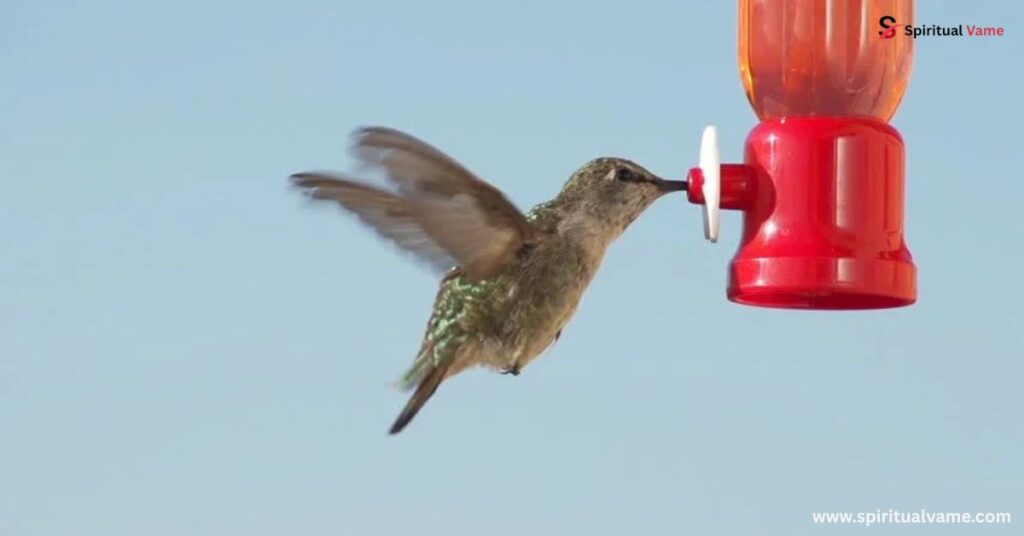
You can easily craft a DIY ant moat using a small cup, some wire, and a little creativity. Poke a hole in a bottle cap, run a wire through it to make a hook, and fill the cap with water. Hang it above your feeder — simple, cheap, and very effective.
Conclusion
In this guide on How to Keep Ants Away from Hummingbird Feeders, we shared simple and smart ways to stop ants. Ants love sugar, so they often find their way to feeders. Use ant moats, clean often, and hang feeders carefully. These small steps work well. Always keep feeders clean and dry. This keeps ants away and helps hummingbirds stay safe.
Remember, learning How to Keep Ants Away from Hummingbird Feeders is easy. You just need to act fast and stay alert. Try every method we share. They all help in different ways. Now you know How to Keep Ants Away from Hummingbird Feeders. Use these tips and enjoy watching your tiny, happy birds.


